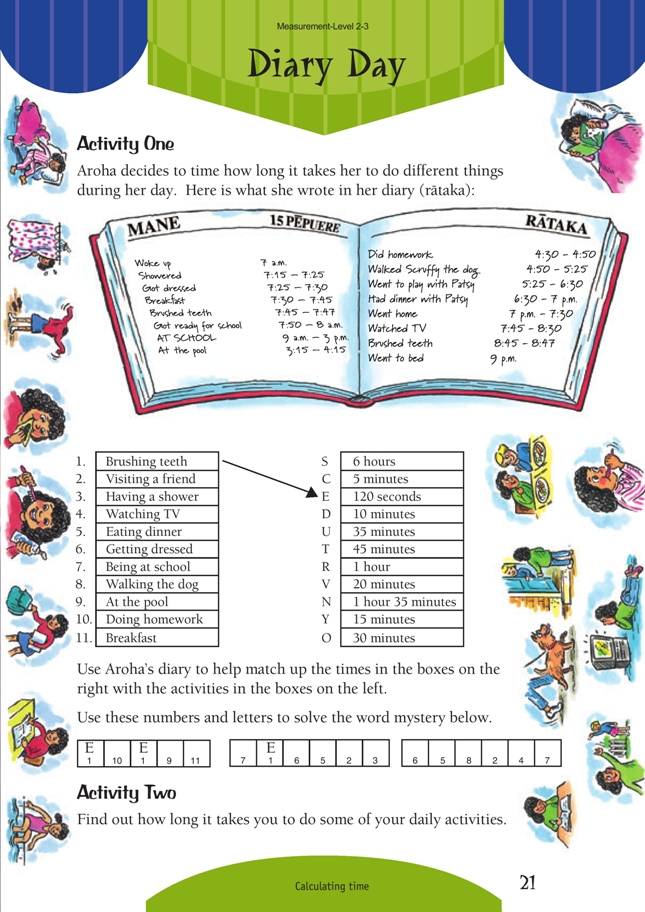This is a level 2 measurement strand activity from the Figure It Out series.
A PDF of the student activity is included.
Click on the image to enlarge it. Click again to close. Download PDF (274 KB)
solve problems using a timetable diary
FIO, Level 2-3, Measurement, Dairy Day, page 21
This activity involves students reading a timetable. Students must be able to understand the seconds, minutes, and hours units and be able to calculate the time elapsed between two given digital times.
This is quite difficult.
A digital clock can help students to make sense of the diary. The setting buttons change the minutes and the hours. For example, to find out how long Aroha spent doing homework, the time can be set to 4:30 and then the minute setting button clicked until 4:50 is reached. Students can count the clicks to find out that 20 minutes elapsed. In calculating the time taken to walk the dog, from 4:50 to 5:25, students should start at 4:50 and push the minute setting button to get to 4:00 (10 clicks) and
then push the hour button once to allow for the extra hour (5:00). Continue with the minute button to get to 5:25. The total count, 10 + 25 = 35, is the number of minutes taken to walk the dog.
After some experience of this, encourage students to calculate from the digital times. Adding on is a less troublesome method than subtraction. For example, to find how long Aroha spent watching television:
When subtracting, students can get confused between digital time and decimal notation. For example:
an useful exercise before students attempt this page is some simple conversions of time, such as:
“How many seconds are in 1 minute?” (60)
“How many minutes are in 2 hours?” (120)
“How many seconds make 3 minutes?” (180)
Answers to Activities
Activity One
1. E
2. N
3. D
4. T
5. O
6. C
7. S
8. U
9. R
10. V
11. Y
Every second counts
Activity Two
Answers will vary.


